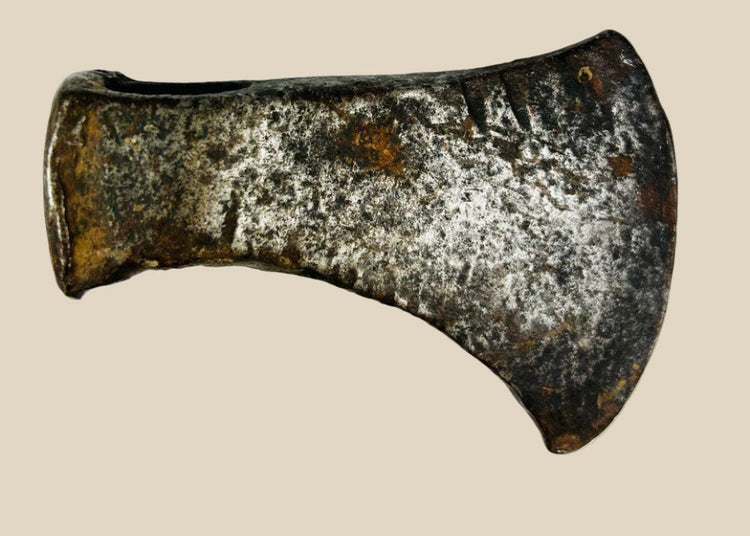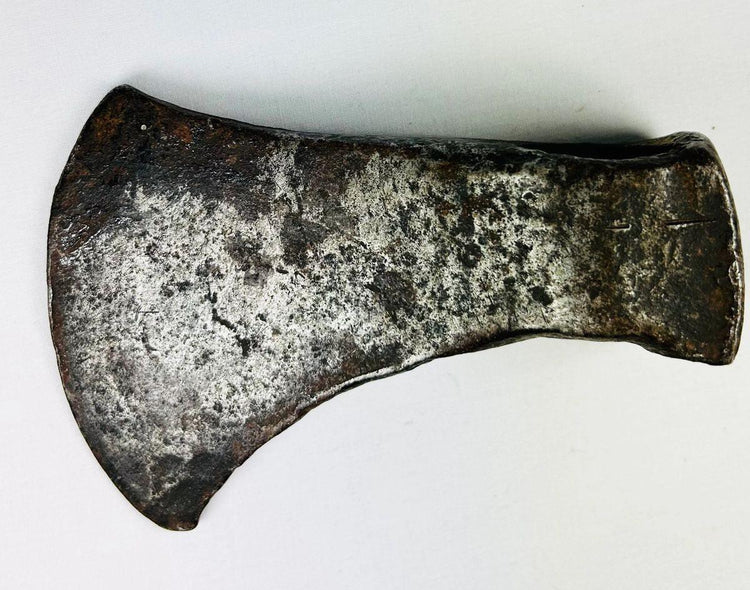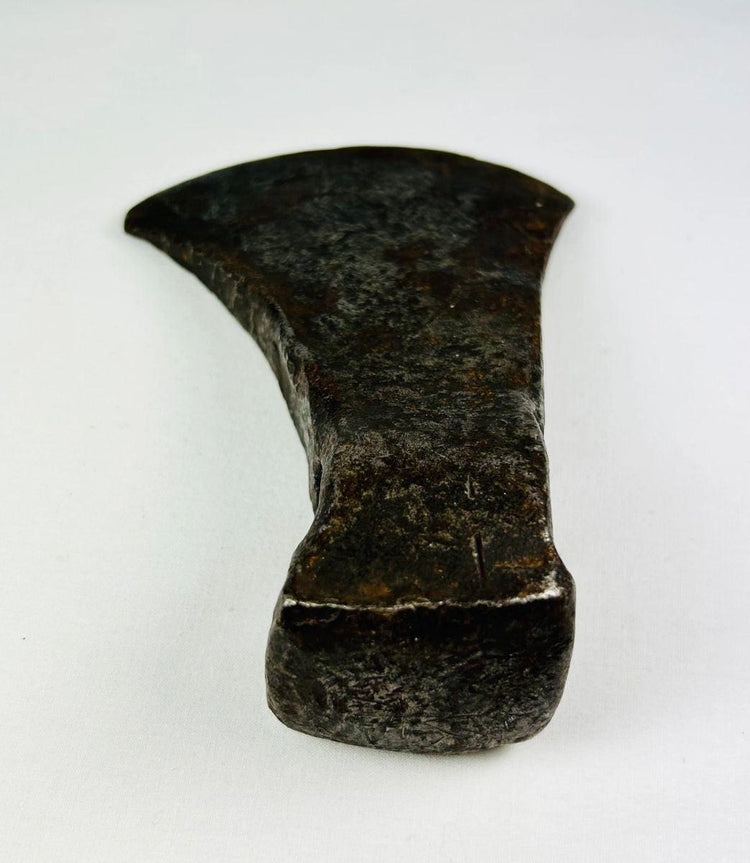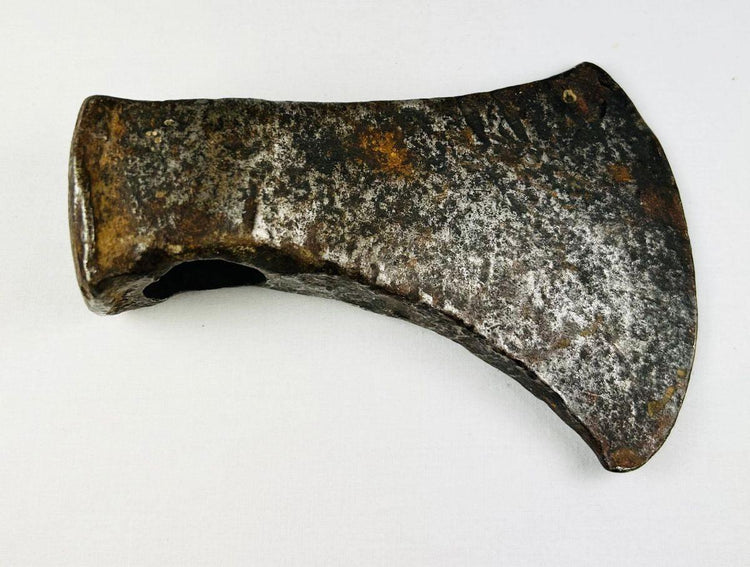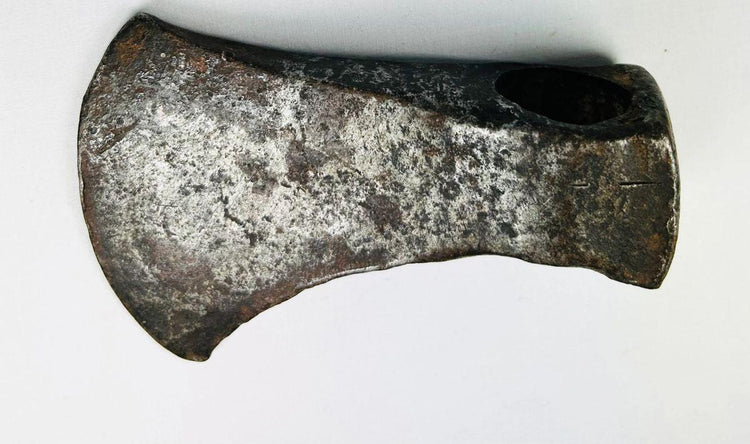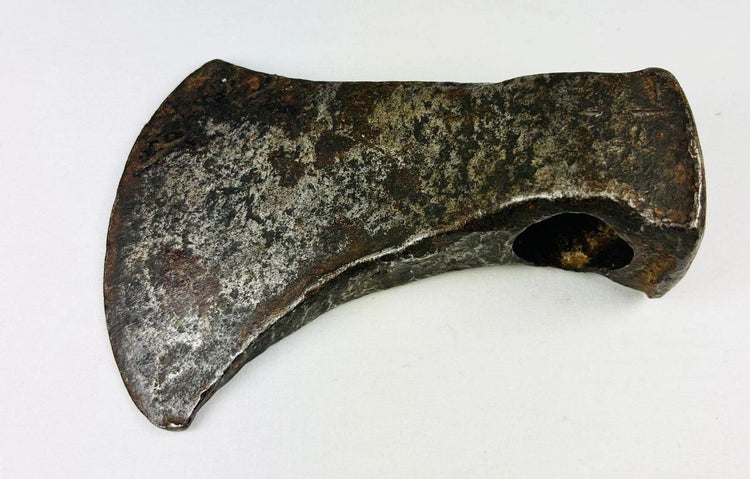Frontier-Era Axe Head | Hand-Forged Iron Woodcutting Tool | 19th Century North America
Description
More
Less
Historical Context & Origin
Region: North America
Material: Forged iron
Period: 19th Century (c. 1800s)
Description
This authentic forged iron axe head dates to the 19th century, a period when settlers and laborers across North America relied heavily on durable tools to sustain life in the frontier. Likely used for woodcutting, farming, and construction, this axe head embodies the resilience and ingenuity of early settlers who cleared forests, built homes, and cultivated the land. Its form—a tapered cutting edge with a hand-forged eye socket—represents the practical craftsmanship of rural blacksmiths, whose work was essential to daily survival.
Features
- Hand-forged with a tapered edge for efficient cutting
- Distinct eye socket designed to secure a wooden haft
- Compact yet robust construction typical of 19th-century frontier tools
- Aged surface with pitting and patina from extensive use
Cultural Significance
Beyond its utilitarian role, this axe head symbolizes the spirit of North American pioneering life. Blacksmiths provided tools like these as vital necessities for settlement, agriculture, and construction. Each mark of wear speaks to its role in shaping the early communities of the 19th century.
Condition
The axe head is in stable antique condition with a rich, dark patina and scattered pitting consistent with age. Wear marks from repeated use are visible along the edge and body, enhancing its authenticity as a working tool of the era. Despite its long service life, it remains structurally sound, with no modern repairs.
Dimensions (approximate)
Length: 5 in
Age
Approximately 150–200 years old
Learn More
Explore the Untold Story of the Axe Through the Ages
Description
Historical Context & Origin
Region: North America
Material: Forged iron
Period: 19th Century (c. 1800s)
Description
This authentic forged iron axe head dates to the 19th century, a period when settlers and laborers across North America relied heavily on durable tools to sustain life in the frontier. Likely used for woodcutting, farming, and construction, this axe head embodies the resilience and ingenuity of early settlers who cleared forests, built homes, and cultivated the land. Its form—a tapered cutting edge with a hand-forged eye socket—represents the practical craftsmanship of rural blacksmiths, whose work was essential to daily survival.
Features
- Hand-forged with a tapered edge for efficient cutting
- Distinct eye socket designed to secure a wooden haft
- Compact yet robust construction typical of 19th-century frontier tools
- Aged surface with pitting and patina from extensive use
Cultural Significance
Beyond its utilitarian role, this axe head symbolizes the spirit of North American pioneering life. Blacksmiths provided tools like these as vital necessities for settlement, agriculture, and construction. Each mark of wear speaks to its role in shaping the early communities of the 19th century.
Condition
The axe head is in stable antique condition with a rich, dark patina and scattered pitting consistent with age. Wear marks from repeated use are visible along the edge and body, enhancing its authenticity as a working tool of the era. Despite its long service life, it remains structurally sound, with no modern repairs.
Dimensions (approximate)
Length: 5 in
Age
Approximately 150–200 years old
Learn More
Explore the Untold Story of the Axe Through the Ages
You May Also Like


















